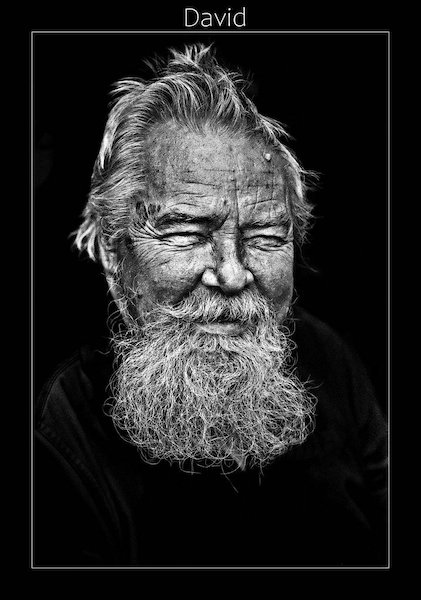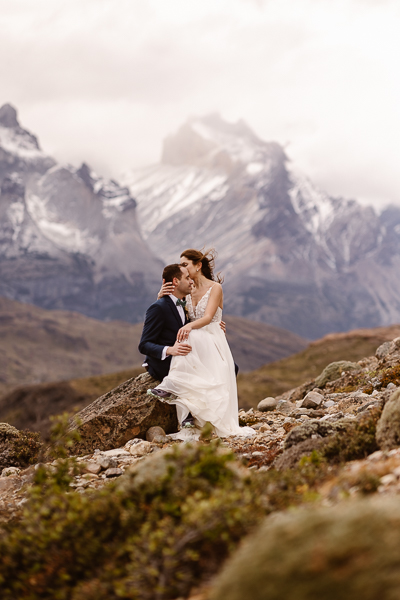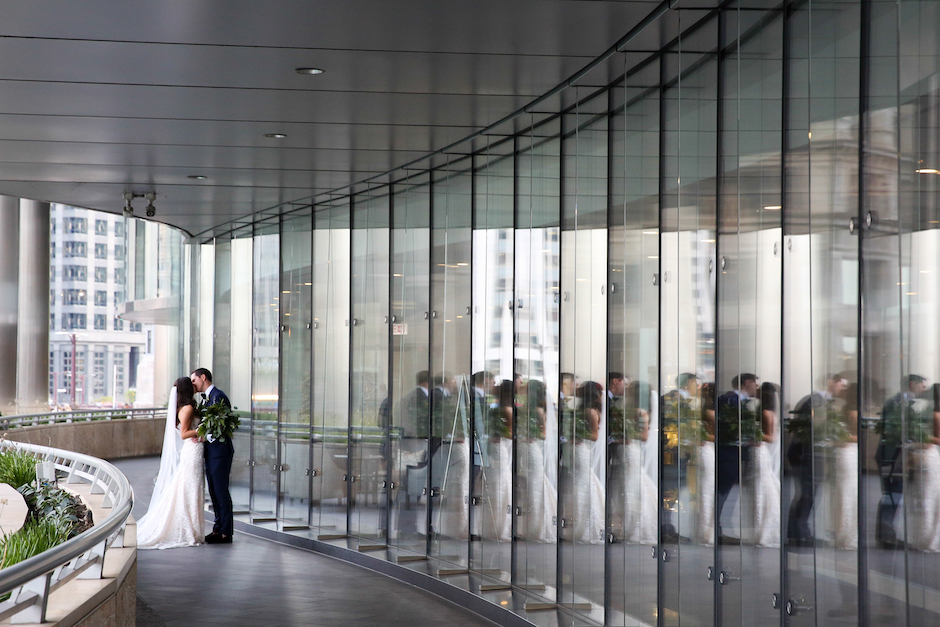Davis Ayer’s Magic Behind His Photo Manipulation
December 6, 2016
WHY YOU SHOULD KNOW HIM
Davis Ayer experiments with alternative processes that inspire the edgier side of wedding and portrait photography. He’s set to release his first book next year.
davisayer.com | @davisayer
Davis Ayer sits in his room in his L.A. apartment and stares at the walls. Covering them are hundreds of Polaroids, shot with one of his favorite types of film—the Fujifilm Fp-100C Peel-Apart Instant Film. “One of my biggest breakthroughs was with the Fuji 100C,” he says, a sting of melancholy in his voice. “I’m really hoping to do a whole book of it now that they’re going to stop making it.” Indeed, Fujifilm announced discontinuation of the company’s last line of peel-apart instant film earlier this year. DPReview declared it the “end of an era”; for Fstoppers, the news was “another nail in the coffin.” For Ayer, an innovator in the industry and a major inspiration to photographers across genres, it presents some curious unknowns.
A mad scientist of film, Ayer peels apart the Fuji 100C, pours bleach onto the black backing of the negative side to dissolve it, then wipes it off, adding layered textures and, effectively, turning it into a big negative that’s fully usable and scan-able. “A lot of people don’t know you can do that—they throw away the negative side—but that’s how I make all my prints for my Polaroids,” he says. “I used to keep that trick to myself, but now I’m just telling everybody.”
Ayer has earned an impressive number of admirers from around the world, though in remaining purposely unaware of the exact numbers online, he hardly knows the level of his popularity. He was genuinely surprised and endearingly flattered when told many wedding photographers deeply admired his work—the irony that he’s actively stayed away from shooting weddings wasn’t lost on him. Si Moore and Sophie Bayly, Chellise Michael and Mike Busse—all 30 Rising Stars within the last couple of years and forward-thinkers who’ve since reappeared in the pages of Rf—have gaped at Ayer’s images on Instagram in an attempt to unfurl the mystery behind his images, created without digital manipulation. That Ayer is sharing his techniques, letting you look at the man behind the curtain—well, it’s uncharacteristic. In fact, it’s a plot twist to the protagonist of his story: the mystique in his work.
“I feel like I have this toy chest of different ways that I know to shoot or manipulate things, and once I try it out and know that it works, I file it away,” he says. “The whole discovery of trying something out for yourself is sort of the fun of it, seeing something and being like, how can you do that? A lot of people write me asking how I did something and, I don’t know, sometimes I’ll point them in the right direction, but there are so many people that just ask without trying to do things themselves.”
Ayer isn’t in the business of asking questions of anyone but himself; he knows the pursuit of one trick might not crack its code, but it could reveal that of another. “Then maybe it becomes your technique,” he offers. “That’s what I want, for people to go down their own paths and come to their own conclusions and have it be special. There’s too much sameness for everybody to be doing the same stuff.”
FROM ORDER TO CHAOS
Born and raised in Austin, Texas, Ayer’s first camera was an old Canon AE-1 that his dad gave him as a kid. He used it as a high schooler but didn’t pick up photography seriously until later. As a college student at Texas State University, he focused on history, architecture and political science, but emerged from his studies not knowing what he wanted to do.
He took the summer off to clear his head and hang out with friends. His camera had a way of tiptoeing into the scene. Casual photos of friends soon turned into portrait sessions and weddings, which he quickly stopped shooting. “I’m far less concerned with the subject of a portrait than I am with everything else in it. I think I’m more technical in that sense,” Ayer says. “There are certain aesthetics that I think I picked up in my studies—Japanese architecture, minimalism and use of negative space as positive space—and when doing a portrait, I’m always looking for the right background, the right angle, the right mood. So I’m not so directive as a photographer, I just want people to be as they are.”
He looked up to photographers like Steven Shore, Joel Sternfeld and Andreas Gursky. “With Gursky, he shoots at this amazing scale, and with every one of his photos, there’s so much going on. Personally, I think that intrigues me more,” he notes, “the art of patterns and awe-inspiring places—order found within chaos.”
In a way, Ayer today is the antithesis of Andreas Gursky and everything he admires about him; he creates chaos from order. Focusing on shapes and scenes that are simple and serene, he develops the negatives and then gives them something otherworldly. “I hadn’t thought about it like that,” he says with a laugh, “but that’s totally true—if there’s too much order in a photo, there has to be more chaos. This is too neat, it’s too pretty and clean and it needs something more. I like the feeling of seeing an image and just being overwhelmed with sensual delight, not knowing even how to process things. You have to take a second and be like, wait, what’s happening? It’s so easy to flip through images now that I want it to be something that makes you have to stop and really look at it.”
While he owns a DSLR, Ayer finds digital to be “really unsatisfying, simply because there’s so much perfection in it. You can get things exactly as you want it, which I’m sure is great for a lot of photographers, but for me, it’s the imperfections and the moments you couldn’t really capture digitally. With film, there is a tangible difference in the way it looks.”
One of his favorite in-camera techniques is the double exposure. He likes it, first and foremost, for its ability to capture something that is “absolutely impossible to create in the real world,” he says, but it’s as much a solution as it is a technique. “I can’t tell you how many times I will accidentally hit the shutter while I’m getting ready to take the picture, and I’m like, damn it! Damn it, damn it! I didn’t mean to take that! But okay, wait, what was in that frame? I have to turn it into a double exposure. You have no idea what it’s going to look like but you get it back and it’s like the random way the two frames interact is more beautiful than any way you could have intentionally done it.”
Whether he’s loosening the emulsion on his developed negatives to make the images bleed away, or experimenting with diluted chemicals, paint, food coloring, and—more recently—fabric, Ayer is very much a post-production photographer in constant pursuit of capturing a feeling. “Some stuff looks awesome and some stuff looks terrible and I ruin it,” he says, “but no one ever has to see those.”
Actually, most of his work gets tossed to the side. The work he’s shared is pared down to his best. “If anyone saw every photo I’ve ever taken and every mishandled attempt to make it look cool, I would disappoint a lot of people,” he says with a laugh. But he never throws anything away; his apartment is filled with binders of negatives and drawers of materials, to be used when inspiration hits.
IN REAL LIFE
While there are constant personal projects percolating in his brain, Ayer’s also done shoots for clients and taken on commissions. This year he’s outfitting a Huntington Beach hotel with large-scale prints for its lobby and staircases, and several bands from Columbia Records and New West Records have tapped him for album artwork. Ayer doesn’t do a whole lot of self-promotion, so most of the time people simply happen upon his photography.
This works out well when a fan wants a print or two for their home office, but “a lot of times it’ll be feast or famine,” Ayer says. When money runs low, he’ll hunt for a couple of bigger gigs. “Then I’ll coast on that for as long as I can and work on my personal stuff, which, in a couple months if someone wants to buy it for something, it pays for itself.”
Lately he’s been coasting, which has allowed him to focus on an upcoming book—highly requested by his admirers for a while—to be released next year. So far untitled, it will feature work shot back in 2014 on a trip to Hawaii and Japan with his ex-girlfriend, a frequent muse in his archive. “We had broken up before the trip but still went on it anyway,” he explains, “so the photos have this weird tension to them. I love them but I can’t tell you how hard it’s been for me to hold onto these images for two years without anybody seeing them. Hopefully just getting it done will make it easier to do more in the future.”
The future might also hold fewer portraits. “I’ve enjoyed doing portraits, but I kind of don’t like how much of my photography right now is based on pretty girls,” he says. “To me that’s really not that interesting, it’s just something that I had fallen into.” Ayer feels himself getting pulled into the abstract, “doubling down on weird things,” he says. “I want to find new ways to envision photography. I don’t know what that is yet.”
It could be mixed media. In 2013, when he first moved to L.A., he took a break from photography and spent some time cutting out images from old LIFE and Playboy magazines. He’s got a giant box of them, patiently waiting to be tested out. “I want to get a little bit more of my personality into my photos—a little bit of it is in there now, but I feel like a lot of it comes off as too self-serious, when I’m not that at all,” he says. Part of that seriousness is rooted in his move to L.A., when he was trying to process some difficult feelings. “That work has a twinge of longing and homesickness. Learning to turn my negative feelings into art and figuring that out was a breakthrough, but I feel better now and I feel more at home.”
Knowing where he’s at today is one thing, but envisioning where his photography might be in the years to come, especially with the fall-out of his favorite film, is a new mystery. But, no matter to Ayer. “I’ve never liked knowing where I’m going,” he says. “I feel like I’m always flailing and figuring things out as I go. Survival is a motivator of, f**k, I can’t be boring.”
TOP THREE TIPS FROM DAVIS AYER
1. GETTING HIRED: It’s about taking one of two paths.
“Since everyone has a camera now, there’s so much boring stuff out there. To get hired as a photographer, you have to either be the very best at doing it in the traditional way, or you have to trying to be doing something different, in whatever field you’re doing to stand out.”
2. SOCIAL MEDIA: Curate carefully, but learn to detach.
“I do try to stick with it, post something almost every day. I’m not very good at engaging with other people on social media, I just kind of post my photo, close the app and then open it again when I’m ready to post my next photo. But even doing that is really important, if you can just get into a routine of posting a photo a day and making sure that it’s different or unique or helps tell whatever story you’re trying to tell, not overloading. I’d say turn off the notifications on your phone that tells you when someone likes your photo; they’ve done studies analyzing how you get a little dopamine rush when you get a notification, which can distract you from reality. I think it’s something to just post your photo and be done and not care about the response. It’s more about the act of just putting out there that you care about.”
3. INSPIRATION: Look outside of your genre, even if completely unrelated.
“I love road-tripping, I love seeing changes. Living in the city right now, I love seeing how a city works. I’ve been watching all these old documentaries on the creation of the U.S. highway system. I’ve been going on Google Earth and finding natural patterns, and man-made patterns, seeing the way highways intersect and cities intersect and rivers. I just reread The Devil in the White City [by Erik Larson]. It’s a true story about the first serial killer in the U.S., going on at the Chicago World’s Fair. I’m always into the macabre, I don’t know what that is.
“More than any art photographer or artist in general, I’ve been more inspired by history textbooks and looking at these old black-and-white images from the ‘20s and ‘30s and the war and the Civil Rights Movement. There’s just this really, truly tangible difference that you can see when the light is actually burned onto a negative and the moment is actually there, as compared to a processor and an attempt to replicate that. You can tell when it’s that.”




